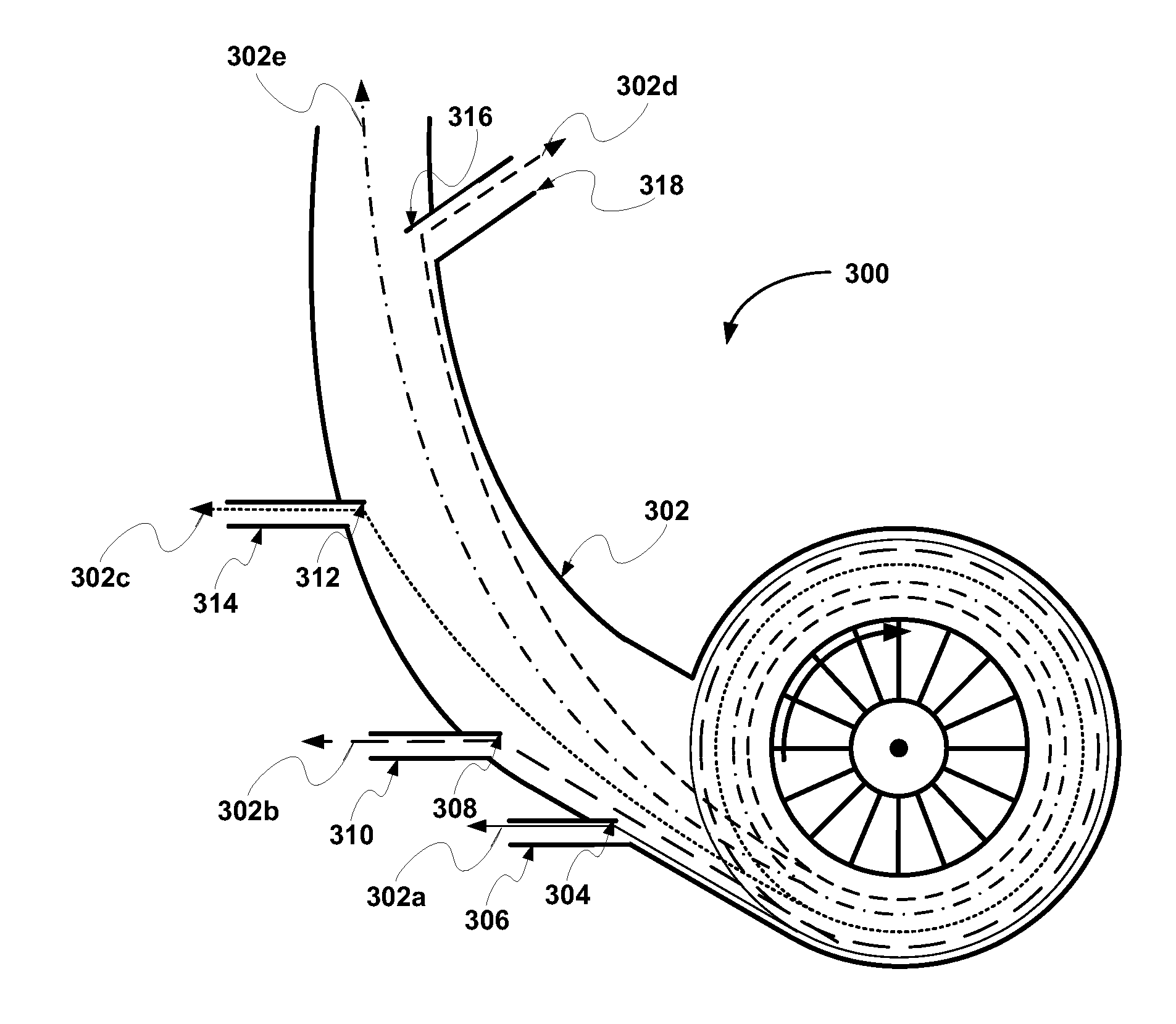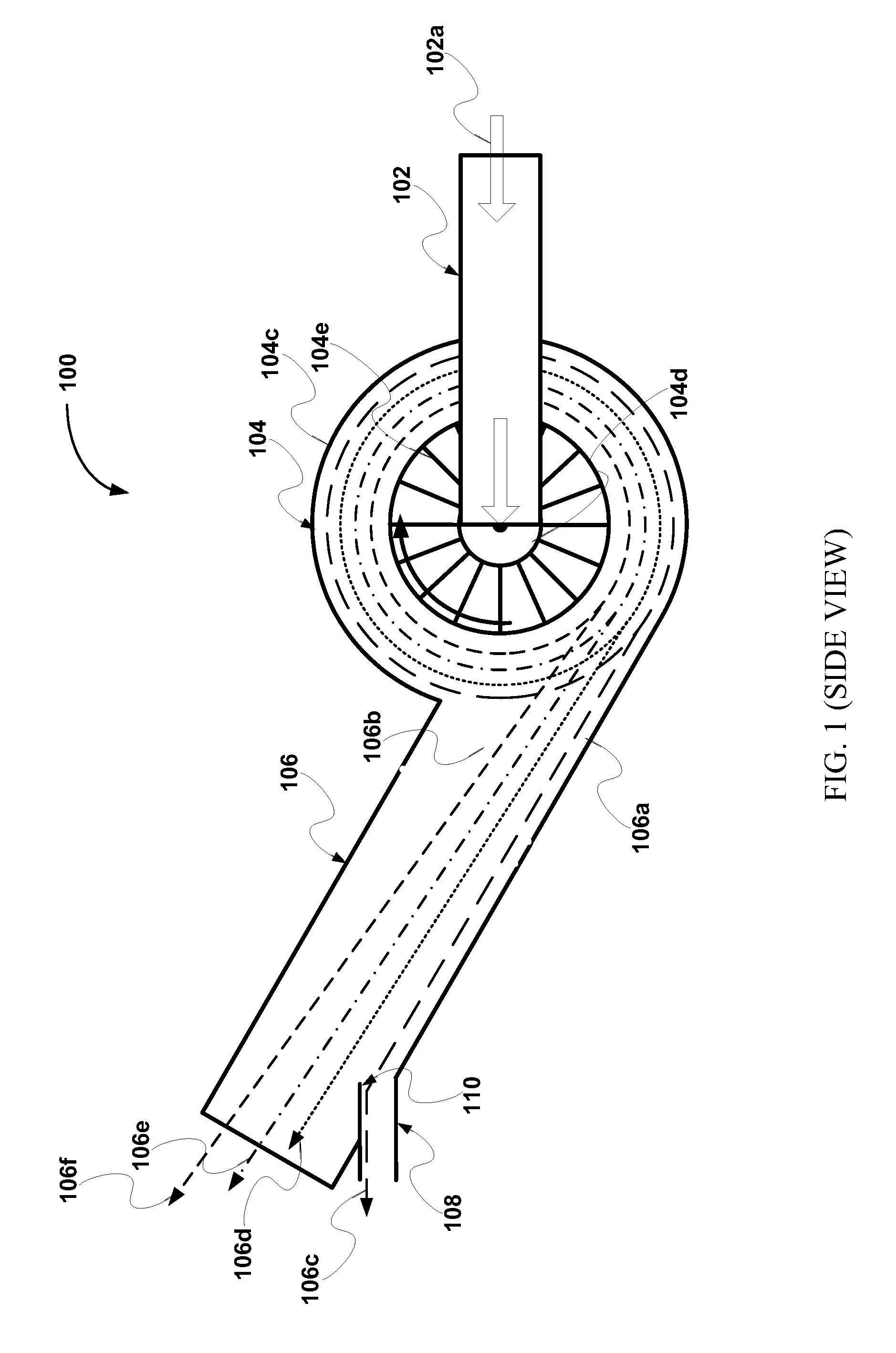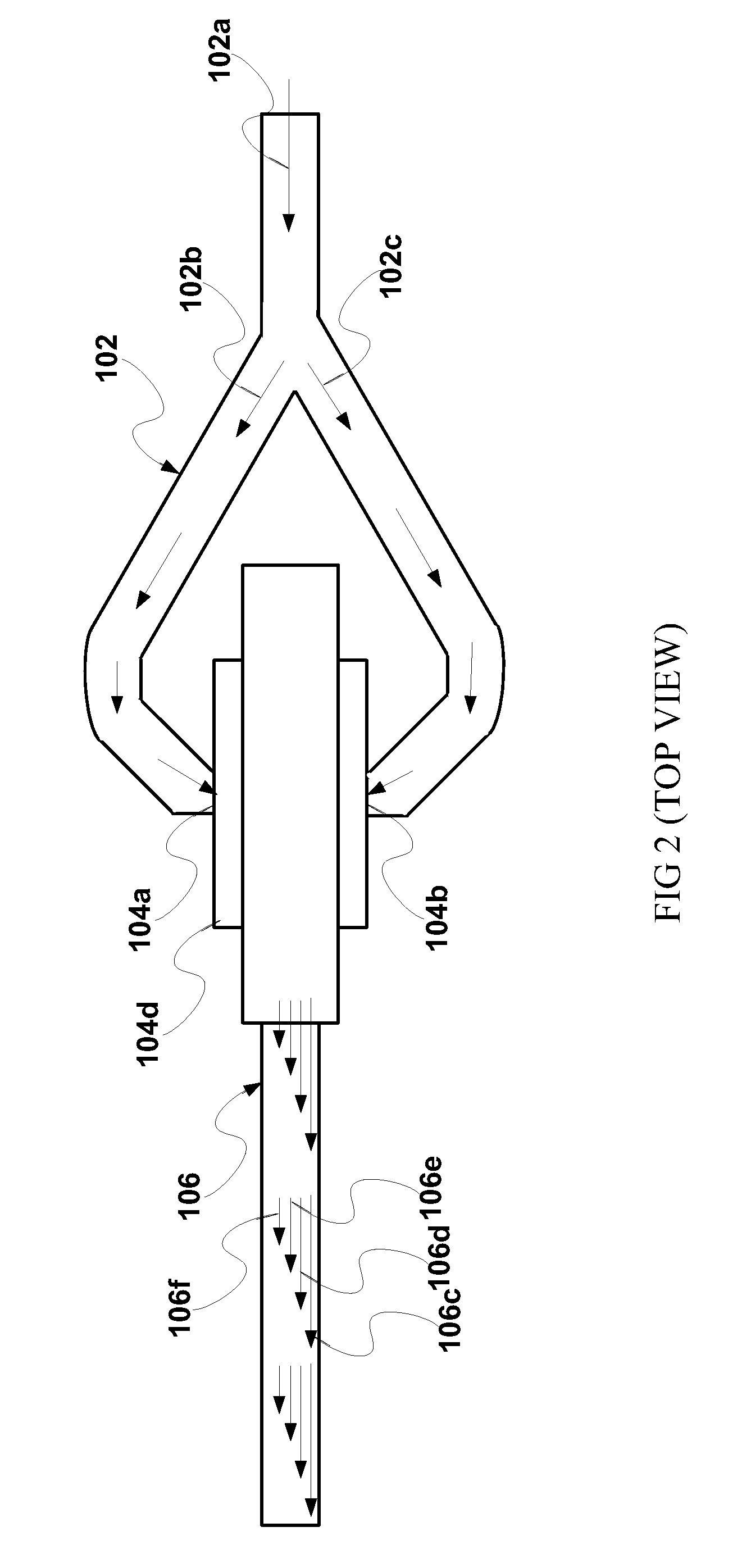System and method for gas separation
a gas separation and gas technology, applied in the field of gas separation, can solve the problems of increasing the pressure within the system, significant high-purity separation is difficult to achieve, and the power consumption of the separation nozzle is significant relative to the separation achieved, so as to reduce the cost of processing the gas
- Summary
- Abstract
- Description
- Claims
- Application Information
AI Technical Summary
Benefits of technology
Problems solved by technology
Method used
Image
Examples
Embodiment Construction
[0028]As used throughout the disclosure, the term “mechanical draft fan”, unless otherwise indicated, refers to large diameter centrifugal fan for moving air or other gases.
[0029]Referring now to the drawing, and more particularly, to FIG. 1, there is shown a system for separating gaseous components from a mixture of gases, generally designated 100, which comprises the preferred embodiments of the present invention. System 100 includes an inlet duct 102, an mechanical draft fan 104, an outlet duct 106, a discharge outlet duct 108, and a baffle 110. Exemplary mechanical draft fans include induced draft fan, forced draft fan, balanced draft fan, and the like.
[0030]In one embodiment of the present invention, inlet duct 102 is connected in a conventional manner to a gas source, such as a landfill. Inlet duct 102 carries a gas stream 102a (e.g. landfill gas) from the gas source to inlets 104a-b of mechanical draft fan 104, a shown in FIG. 2.
[0031]Mechanical draft fan 104 is positioned be...
PUM
| Property | Measurement | Unit |
|---|---|---|
| length | aaaaa | aaaaa |
| interior angle | aaaaa | aaaaa |
| interior angle | aaaaa | aaaaa |
Abstract
Description
Claims
Application Information
 Login to View More
Login to View More - R&D
- Intellectual Property
- Life Sciences
- Materials
- Tech Scout
- Unparalleled Data Quality
- Higher Quality Content
- 60% Fewer Hallucinations
Browse by: Latest US Patents, China's latest patents, Technical Efficacy Thesaurus, Application Domain, Technology Topic, Popular Technical Reports.
© 2025 PatSnap. All rights reserved.Legal|Privacy policy|Modern Slavery Act Transparency Statement|Sitemap|About US| Contact US: help@patsnap.com



